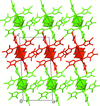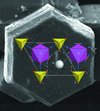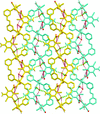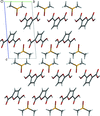issue contents
August 2018 issue

Cover illustration: Two new CuII complexes based on 3,4,5-trimethyl-1H-pyrazole ligands and [MOF5]2- (M = Nb and Ta) inorganic bridges feature one-dimensional chains, which exhibit strict orientational order of the polar anions and deliver a protocol for the rational construction of polar infinite structures. See Sharko, Erhart, Krautscheid & Domasevitch [Acta Cryst. (2018), C74, 929-935].
research papers






































 journal menu
journal menu



































